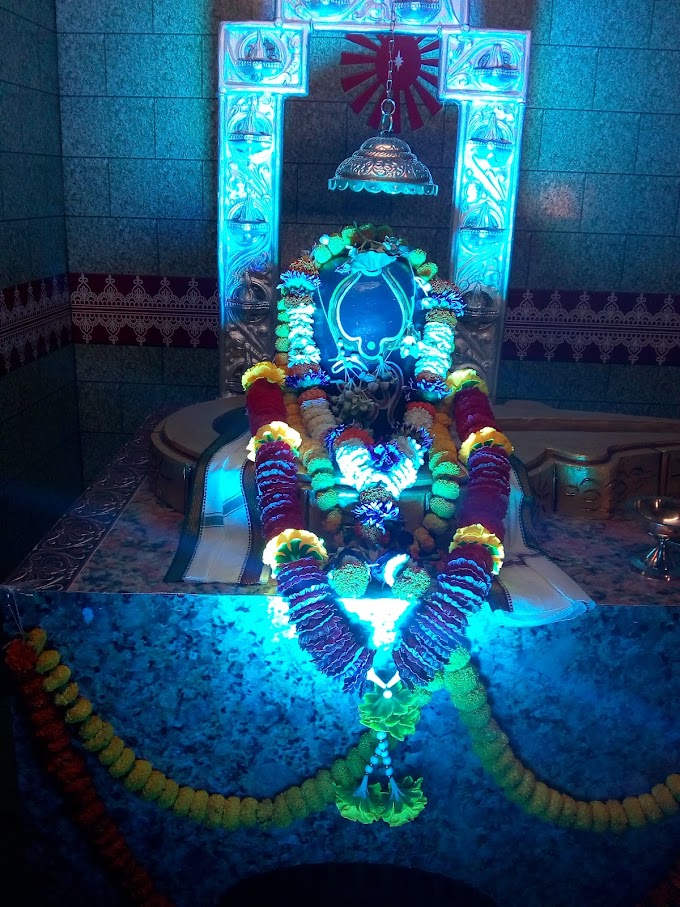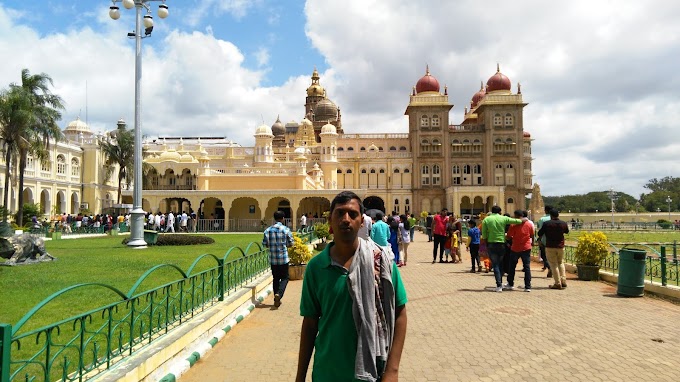FAMOUS CHURCHES IN GOA
Goa is famous for its tourist place and it is the western
part of India. Once upon a time Portuguese were ruled over Goa. Some part of
India was the control under Portuguese rule from 1505 to 1961 and mainly Goa
was under them. The religion of Portuguese is Christianity
(Catholicism). Portuguese were constructed many Churshes in India as well as
Goa.
BASILICA OF BOM JESUS
Monuments Basilica of Bom Jesus (Goa) 10 km east of Panaji
(Capital of Goa), along the Mandovi river, is the town of Old Goa, where lie
some of India’s greatest churches and among them, the most popular and the most
revered by Christians worldwide is the Basilica of Bom Jesus. The Basilica,
dedicated to Infant Jesus, has been declared a World Heritage Monument now. The
word 'Bom Jesus' which means 'Infant Jesus' or 'Good Jesus'.
Renowned throughout the Catholic world, the 16th century
cathedral is India's first Minor Basilica and is considered as one of the best
examples of baroque architecture in India. The layout follows simple new
beginning norms while the detailing and decoration is unabashed Baroque. It's a
magnificent structure which incorporates white marble and has beautifully
gilded altars decorated with frescoes and inlay work. The Basilica houses the
sacred relics of St. Francis Xavier, patron saint of Goa who died in 1552. The
mortal remains of the saint were gifted to the church by Cosimo de Medici III,
Grand Duke of Tuscany.
The foundation of the Basilica of Bom Jesus was laid down on 24
November 1594 and was completed on 15 May 1605 at the hands of Fr. Alexia de
Menezes, the Archbishop of Goa and Primate of India. After the death of St.
Francis Xavier, his body was first preserved at Portugal but two years later
shipped back to the basilica. The saint was believed to have phenomenal powers
of therapeutic healing. His body is still kept in a mausoleum in a nicely
ornamented coffin. The Order of the Jesuits was suppressed in 1759 and all of
its existing property was confiscated by the Portuguese State. However, the
church was allowed to continue its services and has been a revered as a holy
site ever since. It was raised to the status of a minor basilica in 1946.
Today, the embalmed body lies in an airtight glass coffin
positioned in a silver casket crafted by a 17th century Florentine sculptor,
Giovanni Batista Foggini. In accordance with his wishes, his remains were
transferred to Goa the following year after his death. It is said that while
transferring, saint's body was found to be as fresh as the day it was buried.
This miraculous phenomenon continues to attract the spiritual from all lands,
and an 'Exposition' or public viewing of his body happens, once every decade,
to allow pilgrims to view it. Saint is believed to have miraculous powers of
healing and pilgrims come from all over the world to offer prayers. The silver
casket is lowered for public viewing only during the public exposition. Last
exposition was in 2004. Intricately carved basalt embellishments make it one of
the richest facades in Goa. The layout follows simple Renaissance norms while
the detailing and decoration is unabashed Baroque.
The Basilica of Bom Jesus Church located in Goa is one of a kind in India and
is known for its exemplary baroque architecture. Built in 1594 and consecrated
in 1605, the building of this church coincides with the beginning of
Christianity in India. The church is located in Old Goa in Bainguinim about 10
km away from Panjim. The oldest church in Goa, it holds the remains of St.
Francis Xavier, a special friend of St. Ignatius Loyola with whom he founded
the Society of Jesus (Jesuits). Even after 400 years, the remains are in
good condition
.
RESI MAGOS CHURCH
“Reis
Magos” is Portuguese for the Three Magi, otherwise known as the Three Wise Men.
Like these esteemed gentlemen, in order to reach this church one must stay off
the beaten path. The little hamlet of Reis Magos, is the home of not one, but
two famous landmarks, the Reis Magos Church and the Reis Magos fort. Located on
the banks of the river Mandovi, the sparkling white façade of this church is
easily visible from the opposite banks. To reach it one must turn off the road
leading to the tourist hotspots of Calangute and Baga. A little turn just past
the Verem Bazaar past the Hindu tree shrine will lead you to this church.
The small hamlet of Reis Magos lies on banks of the Mandovi
river and is home to two famous landmarks of Goa – the Reis Magos fort and the
Reis Magos Church. It is also one of only three places in Goa, where the unique
Feast of the Three Wise Men is held. Reis Magos lies off the main road, which
passes through the fishing and boat-building villages of Betim and Verem on the
way to the more famous tourist spots of Calangute and Candolim beaches. At the
Verem Bazar, a turning past a Hindu tree shrine takes the traveller to Reis
Magos. The Church, whose whitewashed gabled facade is visible from across the
river in Panaji, was built in 1555. Fransiscan friars, who were in charge of
missionary work for the area, took over the church and founded a small seminary
here.
The church was built shortly after the fort above it, was
dedicated to St Jerome. Historians have found evidence to support the fact that
the Church was built on the ruins of an old Hindu temple. Two typical symbols
of the Hindu Vijayanagar temple architecture – bas-relief lion figures can be
seen on the flanks, at the start of the steps going up to the Church. Not long
after its construction, the Church and the Seminary became a well established
site for learning and its prominence can be gauged from the fact that the
Portuguese royal coat of arms is imprinted below the crucifix at the top of the
gable.
Two of Goa´s former Viceroys are actually buried here,
their tombstone inscriptions in Portuguese. One of the tombs is that of Dom
Luis de Ataide, who gained fame all over the Portuguese empire for his spirited
defense of the colony of Goa, when just with a force of 700 men, he managed to
keep at bay 10,000 Muslim attackers supported by 2000 elephants for a period of
ten long months.
The Church interiors are quite colourful and impressive,
with the highlight being the multi-coloured wood relief showing the Three Wise
Men (Reis Magos) bearing gifts to the baby Jesus, which is the centerpiece of
the elaborately carved. Every year on the 6th of January, Reis Magos comes
alive with the colourful Festa dos Reis Magos, when the story of the three
Kings is re-enacted by local youth playing the parts of the Magi. The locals
celebrate the journey of the three kings who went to worship the holy Infant
Child with a procession which starts from the Church and goes around the
village.
ST CATHERINE CHURCH
Saint
Catherine Parish is the “alma mater” of so many, who would go forth to serve
God, family, and country. Many speak with fond appreciation of their experience
of human and faith formation at Saint Catherine Parish. Generations have been
enriched by the devotion and work of the school sisters and teachers of Saint
Catherine School. All learned from the great classroom of the church, the holy
benches, where faithful sat at the feet of the great teacher and shepherd,
Jesus Christ. Many vocations to priesthood and religious life would rise up
from Saint Catherine Parish to serve the Church the world over. Many more would
live out the vocation of marriage and family life, strengthening the fabric of
community life in Norwood and beyond.
This Church was began construction in 1562 in the reign of King Dom Sebastiao and was
completed in 1619. It had two towers but one collapsed in 1776.













